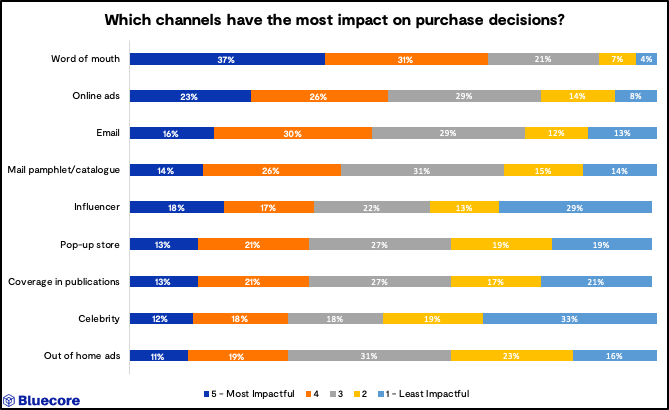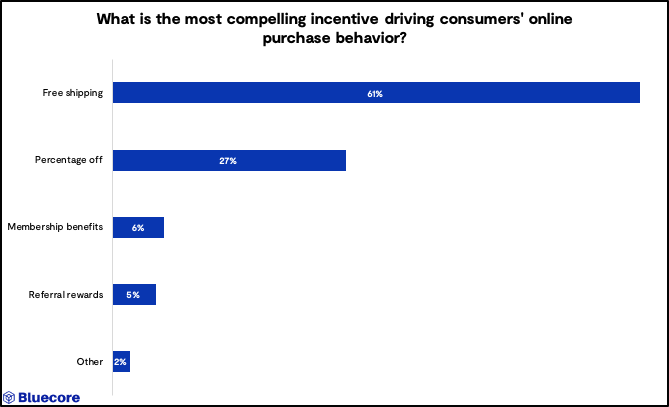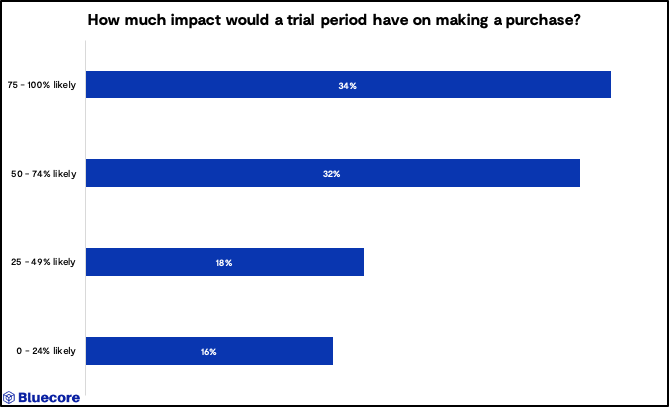
3 Ways Brands Can Get Shoppers to Buy Amidst Evolving Preferences
The age of Amazon has dictated how consumers shop: The immediacy of two-day shipping and the appeal of a low price trained consumers to optimize for convenience, paying little attention to the brand or product itself.
But things look quite different in today’s digital-first world. Modern consumers have both the resources and the time to discover more about a brand’s products and services. As shoppers stay home, they’re less concerned about receiving an item the next day and are more interested in how a brand’s mission aligns with their own views, or perhaps what peer reviews say about a certain product. This is even reflected in Google search terms, as the volume of keywords shifts from “cheapest” to “best,” proving that price is not the end-all-be-all for shopper motivations. The “promo-conomy” is on its way out.
If price isn’t a defining factor, how exactly can brands stand out and get buyers to convert? To answer this question, Bluecore surveyed more than 1,000 shoppers on their preferences and motives. Based on this data, we’ve outlined three strategies to get customers to engage with your brand in this hyper-competitive environment.
Build Community Around Your Core Values

What the survey says
As brands become hyper focused on creating consistent experiences across channels, it’s all too common to overlook a key amplification channel: Your customers. Yet data reveals that existing customers are often the best salespeople, with word of mouth having the biggest impact on purchase decisions.
Ultimately, today’s informed consumers tend to steer clear of platforms like Amazon and actively seek out businesses with a mission, such as those that are local or women-owned. If people see themselves as an extension of your brand, they won’t just buy your product — they’ll likely fully incorporate it into their lifestyle. And it’s exactly that mentality that takes them from casual shoppers to loyal, lifetime customers.
How your brand can respond
Consider opportunities to get creative in tapping into your customer advocates and including them in online community experiences. Empowering your audience to feel like they have a direct impact on your products and services will not only help them feel more connected to your brand, but will undoubtedly make them more likely to share it with their friends and family as well.
Remember: Consumers want to hear from humans, not corporations. This makes it all the more important to incentivize your customers to leave reviews, which can help get your brand noticed more authentically, especially in an age when shoppers are much more intentional about where they spend their money.
How to do it right: Spotlight on Glossier
Glossier’s Into the Gloss blog, which features relevant content for their audience ranging from beauty tips and makeup routines to celebrity interviews and more, is a prime example of a brand successfully building a community around core values.
Advocates can submit their own content to be featured, which helps them feel rewarded and like they’ve “made it” when they get on the site. The quality and curation of the content keeps consumers engaged month after month and makes it a browsing staple for Glossier advocates.
If You Offer an Incentive, Offer Free Shipping

What the survey says
It’s easy to run a blanket “20% off sitewide” discount to drive purchases, but consumers aren’t nearly as receptive to this as you’d think — and you can end up damaging your margins and brand equity in the process. As your brand works to make up lost revenue from closed stores and clear out inventory to secure cash for new merchandise, don’t discount unless you absolutely have to. Discounts not only erode your margins, but they also train shoppers to hunt for deals. As a consumer yourself, think about how many times you’ve seen a product and thought, ”I’ll wait for it to go on sale.” When every dollar counts, you don’t want customers to wait.
Instead, consider sweetening the deal with more of a value-based offer, like free shipping — which 61% of shoppers surveyed agreed is the best incentive. For consumers, the upfront promise of free shipping validates that the price they see online is the price they’ll end up paying, instead of being hit with a $15 cart increase once they enter their shipping address. Meanwhile, your brand can naturally build the cost of shipping into your pricing model to better protect margins, making this offer the ultimate win-win.
How your brand can respond
The next time your brand is ready to run a sitewide discount, consider offering free shipping instead since this not only protects your brand’s margins and reputation, but also aligns best with what consumers want.
Arguably the best approach here is to set a minimum purchase threshold for free shipping to use this offer as a strategic lever for increasing cart sizes. You can even keep this as an always-on strategy and save discounts for the shoppers who actually need them to convert. Many DTC leaders have started adopting this approach recently, particularly in light of concerns around shipping and logistics due to the overnight acceleration of eCommerce.
How to do it right: Spotlight on Under Armour
No matter where you navigate on Under Armour’s website, a banner at the top reads “Get a jump on your holiday shopping: Free Shipping on orders $60+”, with a link to their gifts section.
This approach is strategically designed to promote the free shipping offer and keep shoppers aware of the $60 minimum to activate that offer — which entices them to increase their cart sizes accordingly.
Consider Offering a Trial Period So Consumers Can Get to Know Your Brand

What the survey says
Even through digital, consumers demand experiences with brands — and this can include interacting with your product before purchasing. In fact, 66% of shoppers surveyed are at least 50% more likely to purchase from brands that offer a trial period, which enables them to get to know the brand a bit more before committing.
Informed consumers often look at things like packaging and sustainability, convenience of return policies and customer service, all of which they can experience firsthand as part of a free trial. If done right, not only will these trial periods convert into paid opportunities, but a positive experience can ultimately drive more word of mouth referrals, simultaneously improving acquisition and retention in one go.
How your brand can respond
While not all products are feasible for trials, consider how you can set up your product catalog for some sort of experience prior to purchase.
For example, you might implement a rental service that enables shoppers to test many of your products at once, or you can create a special program around trials for one specific category such as jeans, where fit, comfort and material prove super important and hard to gauge online.
How to do it right: Spotlight on Il Makiage
Makeup brand Il Makiage has mastered the trial experience. Specifically, the brand offers a quiz to determine the best foundation shade for each customer’s skin tone and type and then offers to send three full-sized products to try at home for 14 days. Shoppers pay only for shipping and whatever items they opt to keep.
This trial is a strategic way to stay competitive with the in-store makeup experience, which consists of testing various products and colors from an array of brands. Il Makiage’s digital-first approach coupled with the trial period makes it even easier for consumers to consistently experience the brand’s products both online and in-person.
Why Shopper Motives Matter
In today’s digital-first world, consumer preferences evolve rapidly — and retailers need to keep up. Understanding these motives are the first step toward effectively communicating with customers in this new environment. As a result, your brand needs to consider the preferences and values of your buyers at a deeper, personalized level to remain relevant and respond at the speed of the consumer to any actions they might take.
For more insights on consumer preferences, check out the full report here.





